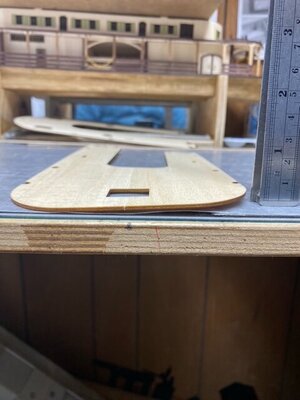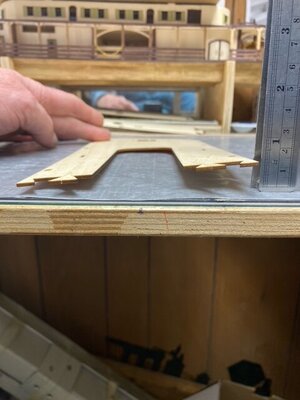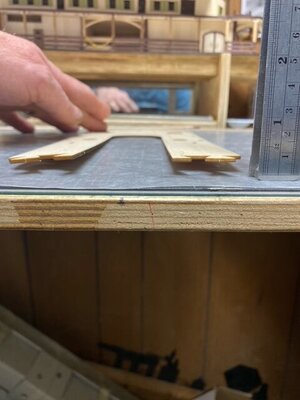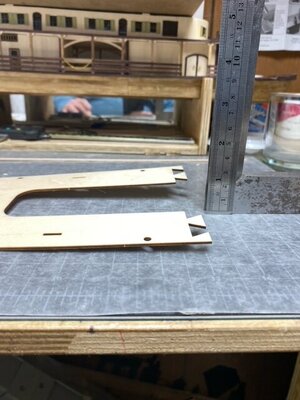Good Day Everyone,
i am in need of some help with a deck issue. i am currently building The King of the MISSISSIPPI i have run into an problem with third Deck where once complete the Pilot House will sit.
after several attempts to correct a badly twisted and warped deck which will be joined to another piece which will make the complete deck i have contacted Artesania Latina where i requested new decking halves and have received them and they are as warped as the original are i have soaked in hot water and laid weighted down till dry with no good results then i wet them again and ironed them still no good results i am lost. stuck and very frustrated
is there any way for me to achieve better results. Once this is applied to ship i see no way to have it look correct.
help in this matter will be greatly appreciated.
i am in need of some help with a deck issue. i am currently building The King of the MISSISSIPPI i have run into an problem with third Deck where once complete the Pilot House will sit.
after several attempts to correct a badly twisted and warped deck which will be joined to another piece which will make the complete deck i have contacted Artesania Latina where i requested new decking halves and have received them and they are as warped as the original are i have soaked in hot water and laid weighted down till dry with no good results then i wet them again and ironed them still no good results i am lost. stuck and very frustrated
is there any way for me to achieve better results. Once this is applied to ship i see no way to have it look correct.
help in this matter will be greatly appreciated.














